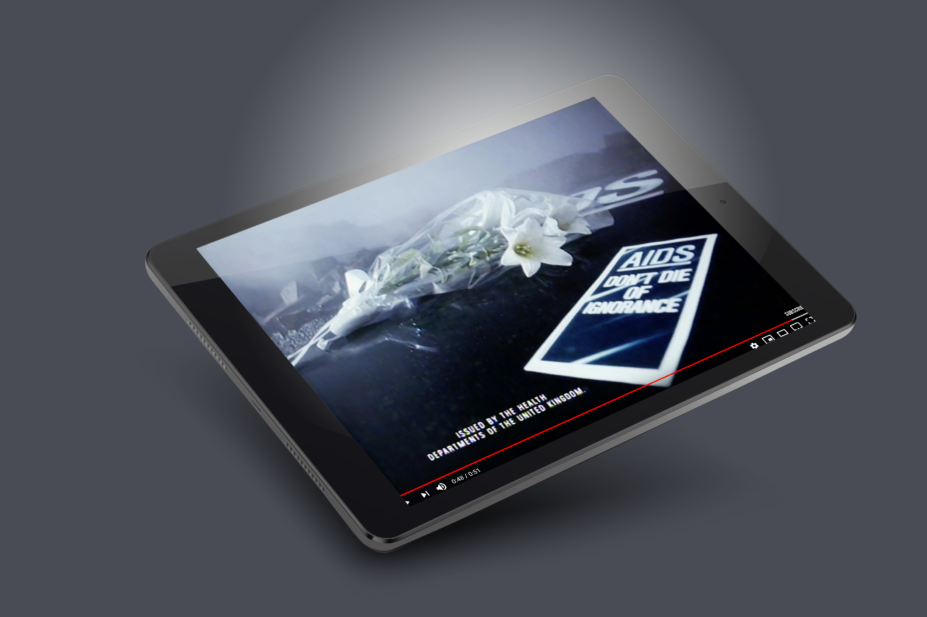
YouTube / JL
Most community pharmacies display a public health poster or two — whether it’s a smiling post-jab Trevor McDonald encouraging over-65s to get their free flu vaccine, or an approachable pharmacist offering clinical advice for your ailments. But public health campaigns haven’t always been this friendly, and a new exhibition, ‘Can Marketing Save Lives? A century of public health marketing campaigns’ at the Museum of Brands, London, charts the evolution of health messages over the past hundred years.
The exhibition, curated by Public Health England (PHE), begins with the First World War, which led to a boom in mass information campaigns encouraging Britain to eat and drink moderately to support the war effort; to improve personal hygiene; and to practise safer sexual behaviours. Posters employed the brash and demanding techniques of the advertising industry at the time.
The interwar years saw a better understanding of how disease is spread and prevented, and the emergence of a number of vaccines. A national diphtheria vaccine programme was introduced in the UK in 1942, and the exhibition features an accompanying poster that struck fear into mothers of young babies (‘Diphtheria costs lives; immunisation costs nothing’) and contributed to reducing deaths from the disease from over 3,000 in 1940 to just 6 in 1957.
When Britain emerged from post Second World War austerity in the 1960s, the government turned its attention from diseases commonly associated with the poor, to habits of the affluent. Information boards describe the more ‘sophisticated’ style of messaging employed to encourage people to adopt a healthier lifestyle. ‘If Marc Bolan kissed you would he feel like this?’ asks a 1976 poster bearing the screwed-up nose of the T. Rex star, which wouldn’t get away with boldly saying “just think how many clothes and how much makeup you could buy instead” today.
A particular highlight of the exhibition is a touchscreen loaded with some of the most important television campaigns of past 50 years, including the haunting ‘Don’t die of ignorance’ — a film designed to raise awareness of HIV and AIDS. You can even see the original ‘AIDS’ tombstone used in the campaign, which terrified viewers when it first aired in 1987 — a time when diagnosis meant death.
Since the 2000s, campaigns have become less prescriptive, and more supportive in changing behaviours. The exhibition includes materials from these initiatives — such as Change4Life, Talk to FRANK and One You. Pharmacists concerned about pharmacy’s image, however, may be disappointed to see that a poster picked from Stay Well This Winter’s 2015 campaign shows a pharmacist donning a white coat.
The exhibition concludes with a look at how public health messages could be delivered in the future. PHE predicts the widespread use of ‘smart objects’ in the home, robot home assistants, and ‘brain–computer interface technology’ — an exciting, if not unsettling, prospect.
Tickets for the exhibition also allow entry to other temporary displays and the museum’s nostalgia-inducing main offering — an Aladdin’s cave of magazines, toys, packaging, and other curios spanning the decades. And pharmacists may be interested to see the seductive adverts for ‘cure-all’ pills, powders and potions, which were often useless, in the museum’s 1930s ‘chemist shop’.
‘Can Marketing Save Lives?’ is well worth a visit if you’re in the area, but you can also find information provided in the exhibition online at: https://publichealthengland.exposure.co/100-years-of-public-health-marketing
‘Can Marketing Save Lives? A century of public health marketing campaigns’ runs until 26 May 2019 at the Museum of Brands, Notting Hill, London; adults: £9; concessions: £7.


